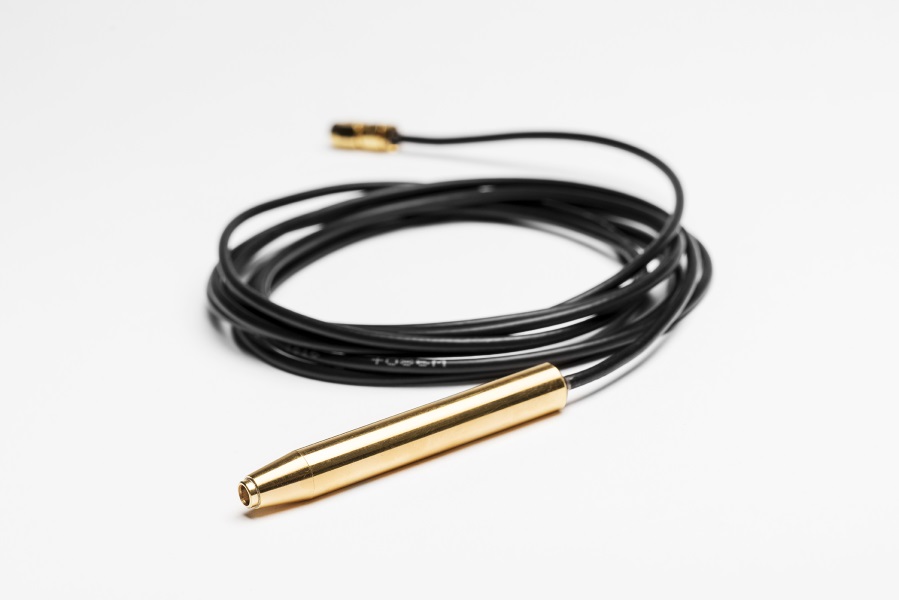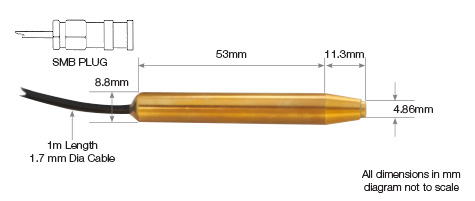Submersible preamplifier
The submersible preamplifier is an essential part of the hydrophone signal as it buffers the signal and provides a 50 Ω source. It connects either directly to an interchangeable probe ('HP' series), or, if required, via a 20 dB in-line attenuator (A20/1).





